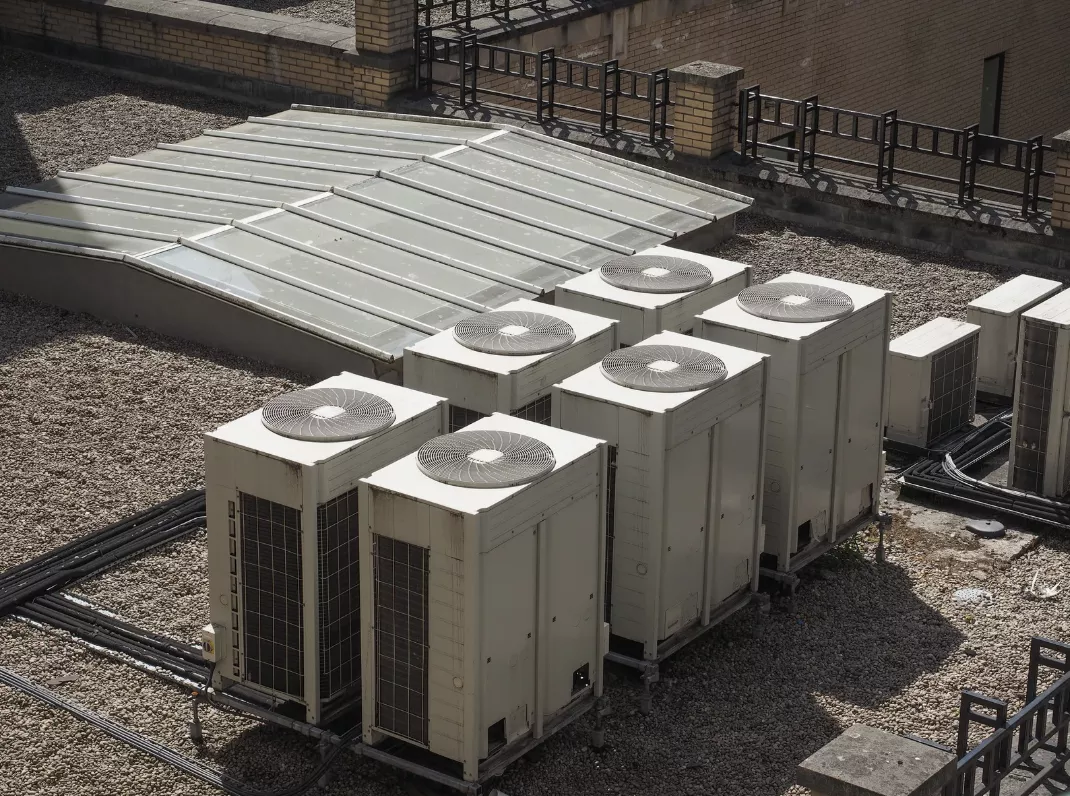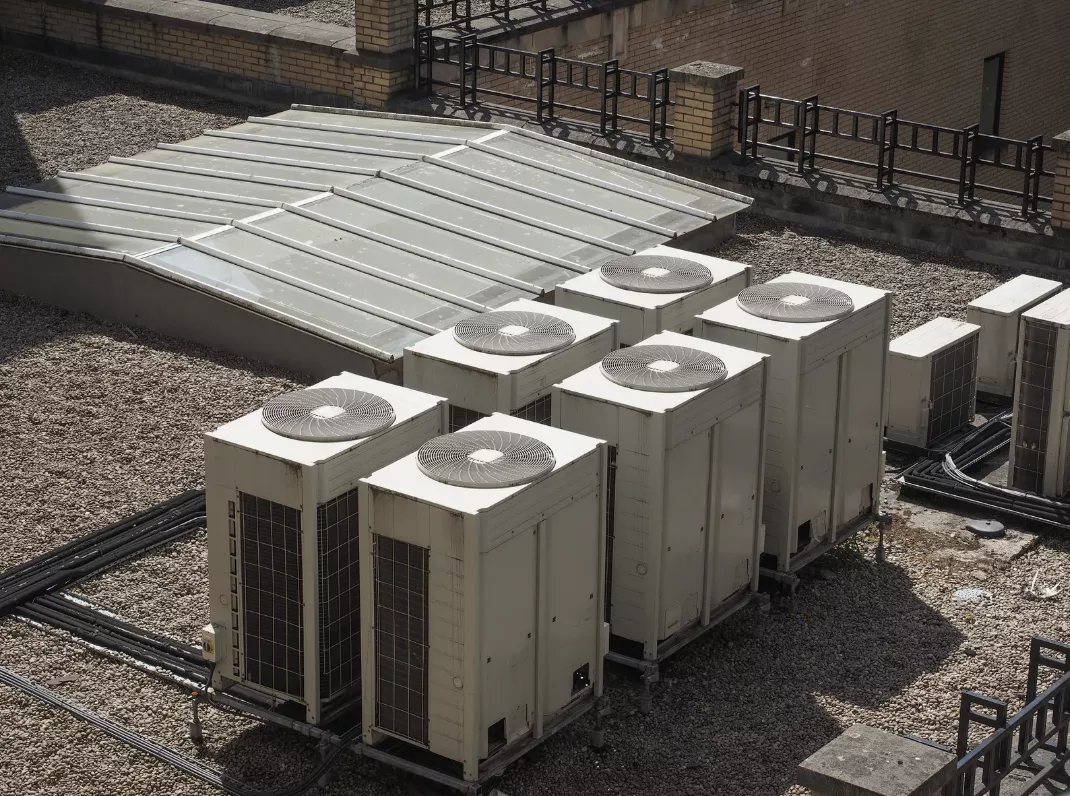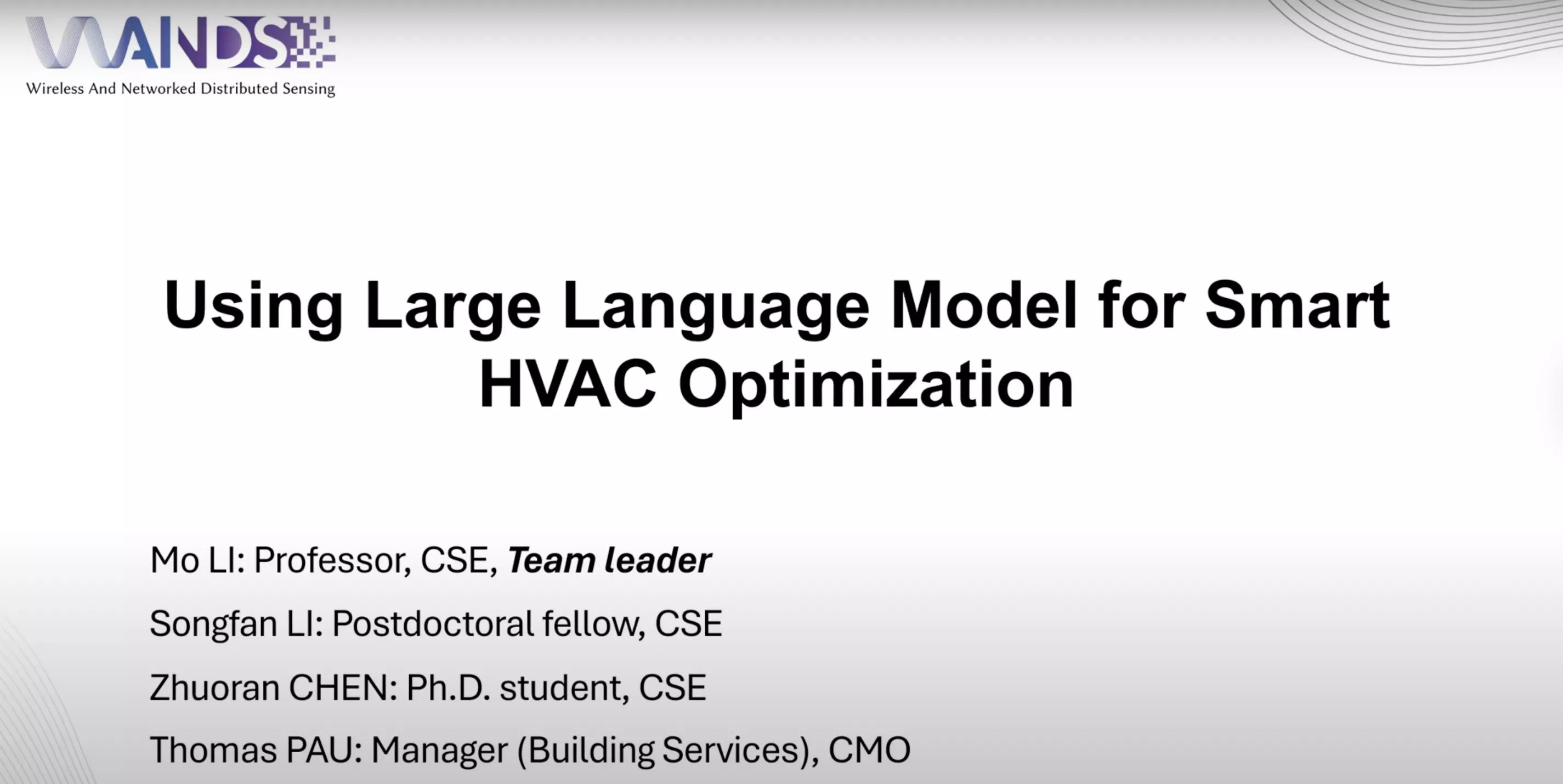Smart HVAC Optimization: AI & IoT for Energy-Efficient Building

Smart HVAC Optimization: AI & IoT for Energy-Efficient Building
Heating, Ventilation, and Air Conditioning (HVAC) systems represent a substantial portion of a building’s overall energy consumption. This project aims to reduce HVAC energy use at HKUST while maintaining indoor comfort. By using IoT sensors to monitor room occupancy, temperature, and humidity, combined with AI-driven models and weather data, the system will optimize HVAC settings dynamically. A safeguard program ensures safe adjustments. The result: lower energy consumption, cost savings, and improved efficiency without compromising comfort—aligning with HKUST’s 2028 energy and GHG goals.
What is the problem this project is trying to address?
The project aims to reduce the HVAC energy usage without giving up the comfort of people, which account for ~40% of building energy use at HKUST, by using IoT sensors implemented in campus’s classrooms, offices and lab to gather real-time environmental data closer to users. Auto-analyzed by AI to control the HVAC usage in order to reduce energy consumption and lower the carbon footprint of HVAC systems.
How does this project support our sustainable smart campus as a living lab vision?
What's next?
The project team will proceed by deploying fault detection algorithms and LLM-based optimization in pilot buildings, expanding sensor networks with ITSO support, and validating safety protocols. Insights will then be scaled to other campus buildings like libraries and classrooms, with potential partnerships for city-wide adoption through green tech grants. Energy savings (targeting 10–20% reduction in HVAC consumption) will be quantified, and results published to advocate for policy changes. The modular design ensures long-term sustainability, with equipment reused or recycled post-project to maximize cost-effectiveness and environmental benefits, delivering key outputs such as an energy-efficient HVAC blueprint, AI models for smart buildings, and a replicable ESG framework.


